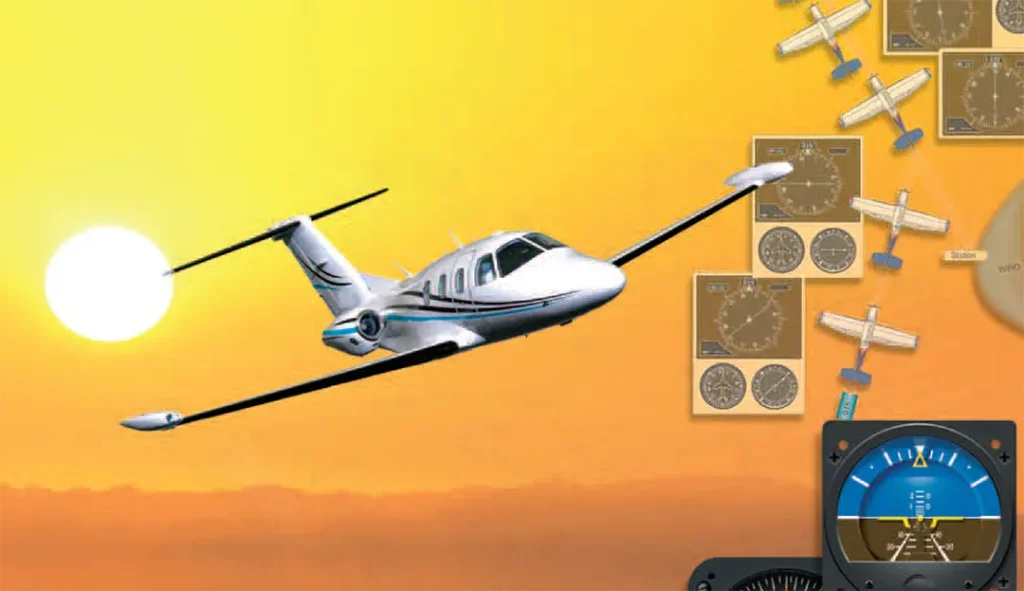
For both pilots and instrument flight instructors, instrument flying is an essential ability. It enables them to operate an airplane without the use of visual signals, navigating and controlling it only with reference to the instruments. Appropriate training for instrument flying is crucial to guarantee competence and safety.
For instructors of instrument flight and pilots getting ready for instrument rating exams, the Instrument Flying Training section is an invaluable resource. As a thorough training tool, this section offers all the necessary reference information for knowledge assessments and instrument flight instruction.
Benefits for Instructors
This section, which provides a variety of carefully chosen techniques and concepts for instrument flying, will be very helpful to instrument flight instructors. These tools can improve their methods of instruction and aid in the efficient training of pilots in instrument flying.
Benefits for Pilots
This area provides pilots studying for instrument rating exams with a wealth of information and guidance. It ensures that pilots are well-prepared for their tests and real-world flying circumstances by covering the knowledge and abilities needed for effective instrument flying.
Many subjects are covered in the Instrument Flying Training segment, such as navigation systems, emergency procedures, weather concerns, and instrument flight rules. It gives a thorough rundown of the principles of instrument flying, allowing pilots to have a firm grasp of this vital area of aviation. To sum up, both pilots and instructors of instrument flight find great value in the Instrument Flying Training part. Its thorough material and carefully chosen teaching strategies make it a useful training tool that guarantees pilots have the skills and knowledge required for safe and successful instrument flying, as well as being well-prepared for their instrument rating exams.
The National Airspace System
- The National Airspace System
- IFR En Route Charts
- New Technologies
- Terminal Procedures Publications
- Instrument Approach Procedure Charts
- Terminal Arrival Area (TAA)
The Air Traffic Control System
- The Air Traffic Control System
- Communication Equipment
- Communication Procedures
- Communication Facilities
- ATC Inflight Weather Avoidance Assistance
- Approach Control Facility and Approach Control Advances
- Control Sequence
Human Factors
Aerodynamic Factors
- Aerodynamic Factors
- Review of Basic Aerodynamics
- Atmosphere
- Lift
- Drag Curves
- Trim
- Slow-Speed Flight
- Climbs and Turns
- Load Factor
- Icing and Types of Icing
Flight Instruments
- Flight Instruments
- Pitot/Static Systems
- Pitot/Static Instruments
- Dynamic Pressure Type Instruments
- Magnetism
- Gyroscopic Systems
- Gyroscopic Instruments
- Flight Support Systems
- Analog Pictorial Displays
- Flight Management Systems (FMS)
- Primary Flight Display (PFD) and Advanced Technology Systems
- Safety Systems
- Required Navigation Instrument System Inspection
Airplane Attitude Instrument Flying
- Airplane Attitude Instrument Flying
- Learning Methods (Using Analog Instrumentation)
- Fundamental Skills (Using Analog Instrumentation)
- Learning Methods (Using an Electronic Flight Display)
- Fundamental Skills (Using an Electronic Flight Display)
- Scanning Techniques (Using an Electronic Flight Display)
- Common Errors (Using an Electronic Flight Display)
Airplane Basic Flight Maneuvers
- Airplane Basic Flight Maneuvers
- Straight and Level Flight (Using Analog Instrumentation)
- Straight Climbs and Descents (Using Analog Instrumentation)
- Turns (Using Analog Instrumentation)
- Approach to Stall (Using Analog Instrumentation)
- Unusual Attitudes and Recoveries (Using Analog Instrumentation)
- Instrument Takeoff (Using Analog Instrumentation)
- Basic Instrument Flight Patterns (Using Analog Instrumentation)
- Straight and Level Flight (Using an Electronic Flight Display)
- Straight Climbs and Descents (Using an Electronic Flight Display)
- Turns (Using an Electronic Flight Display)
- Instrument Takeoff (Using an Electronic Flight Display)
Helicopter Attitude Instrument Flying
- Helicopter Attitude Instrument Flying
- Instrument Flight
- Straight-and-Level Flight
- Straight Climbs and Straight Descents (Constant Airspeed and Constant Rate)
- Turns
- Unusual Attitudes and Emergencies
- Instrument Takeoff
- Changing Technology
Navigation Systems
- Navigation Systems
- Basic Radio Principles
- Traditional Navigation Systems
- Advanced Technologies
- Instrument Approach Systems
- Required Navigation Performance
- Flight Management Systems (FMS)
- Head-Up Display (HUD)
- Radar Navigation (Ground-Based)
IFR Flight
- IFR Flight
- Sources of Flight Planning Information
- IFR Flight Plan
- Clearances
- Departure Procedures (DPs)
- En Route Procedures
- Holding Procedures
- Approaches
- Instrument Weather Flying
- Conducting an IFR Flight
Emergency Operations
- Emergency Operations
- Unforecast Adverse Weather
- Aircraft System Malfunctions
- Instrument/Systems Failure
- Communication/Navigation System Malfunction
- GPS Nearest Airport Function
- Situational Awareness
